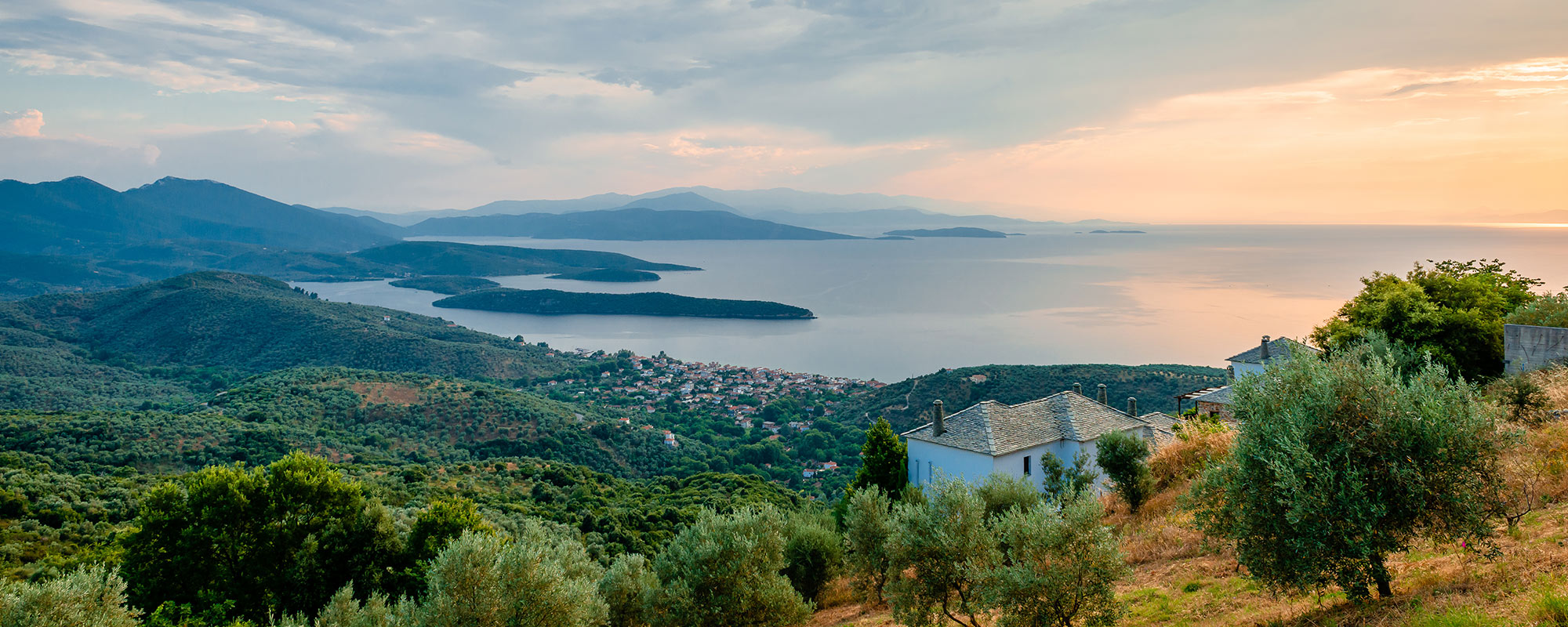
The Pelion Region
Pelion – often also called Pilio or Pilion, Greek Πήλιο – is a mountain range in the northern Greek regional district of Magnisia in the region of Thessaly. The highest elevation is the mountain Pourianos Stavros with 1624 m. The mountain range forms the peninsula that bears the same name and separates the Pagasitic Gulf from the Aegean Sea. At the northwestern end of the peninsula lies the important port and commercial city of Volos.
The Nature
The peninsula is known beyond its borders for its lush vegetation and mild climate.
The mountains are often rugged and drop steeply to the sea in many places, especially on the east coast. Unusual for Greece are the dense deciduous forests of beech, chestnut, oak and plane trees. Here also some species of mushrooms thrive and especially herbs in great variety, which are otherwise hardly found.
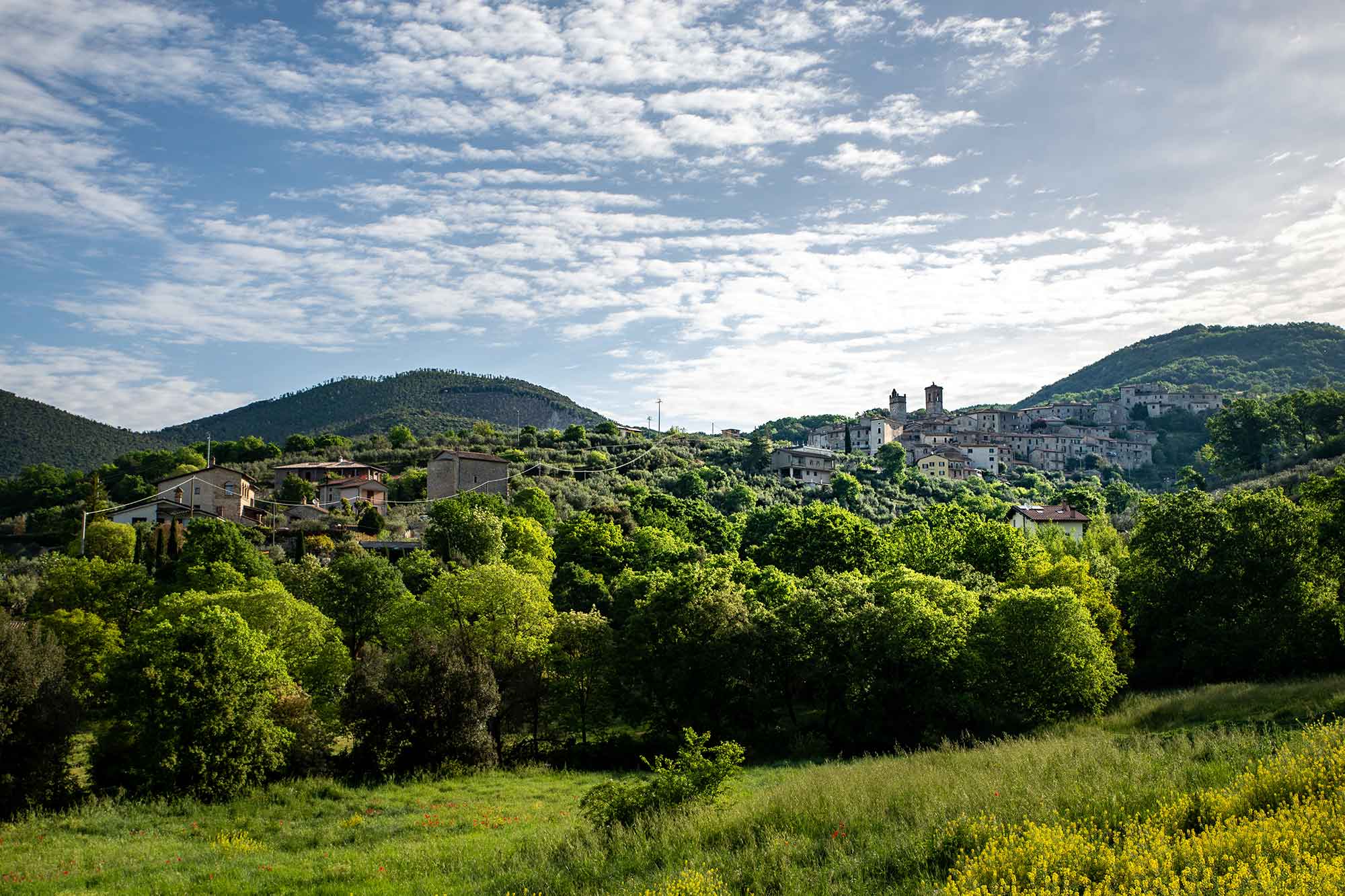
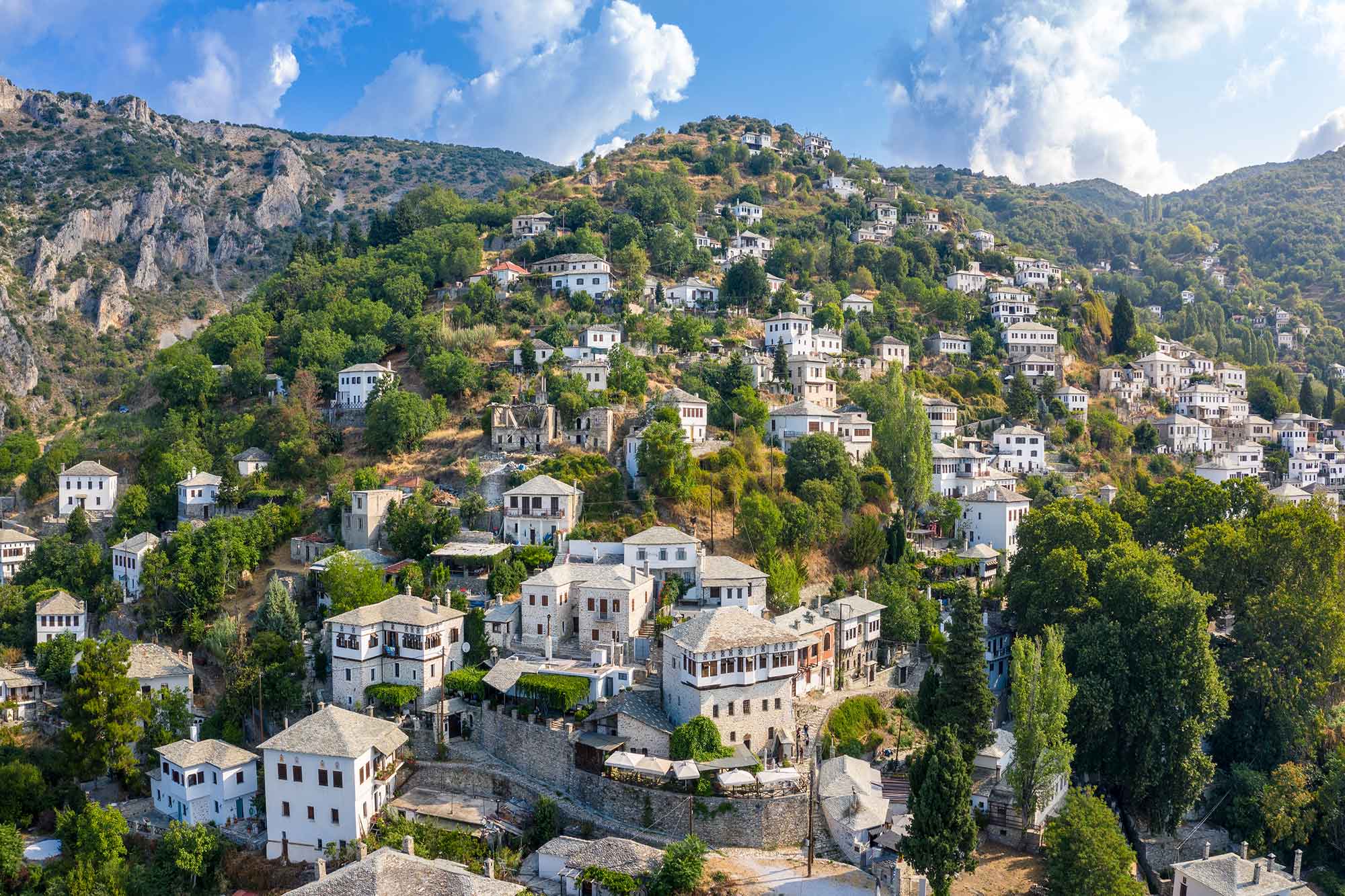
Villages, Cities & Economy
On the peninsula there are about 40 mountain villages and small towns on the coast, whose historical center is often formed by the platia, a round and often tree-lined village square. Characteristic are the mostly three-story mansions, the archontika, built between the 18th and 19th centuries.
The largest town in the region is Vólos, a port and trading town at the northern end of the Pagasitic Gulf. The municipality of Vólos is now home to 144,449 people. Due to its geographically favorable location, Vólos is the economic center of the region. For example, the largest cement factory in Greece is located in the immediate vicinity of the town.
Another important industry is the extraction of slate from quarries near Sikí and Neochorí and marble from Tríkeri.
Fruit Growing Area, Plants & Agriculture
The region of Zagorá, Makriráhi and Anílion is the largest fruit growing area in Greece, especially for apples. The Móuresi region is Greece’s largest gardenia growing area, and the south is known for its olives. In addition, pickled fruits from Pelion are very popular in Greece.
Other important plant species and agricultural products are edible chestnuts, cherries, pears, plums, mulberries, blackberries, oregano and other herbs, honey, lemons, nectarines, peaches, apricots, fish, oranges and various flowers.
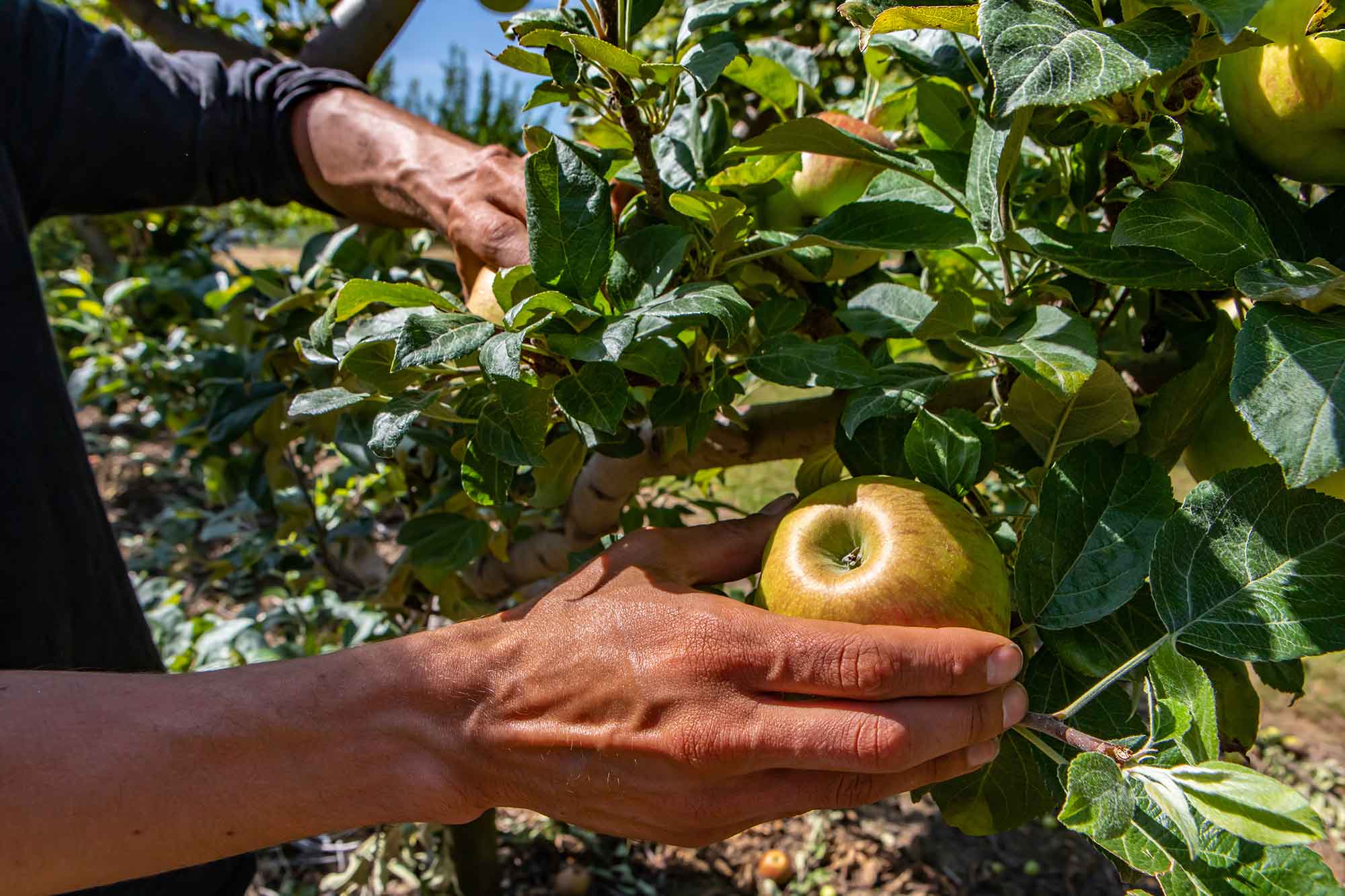
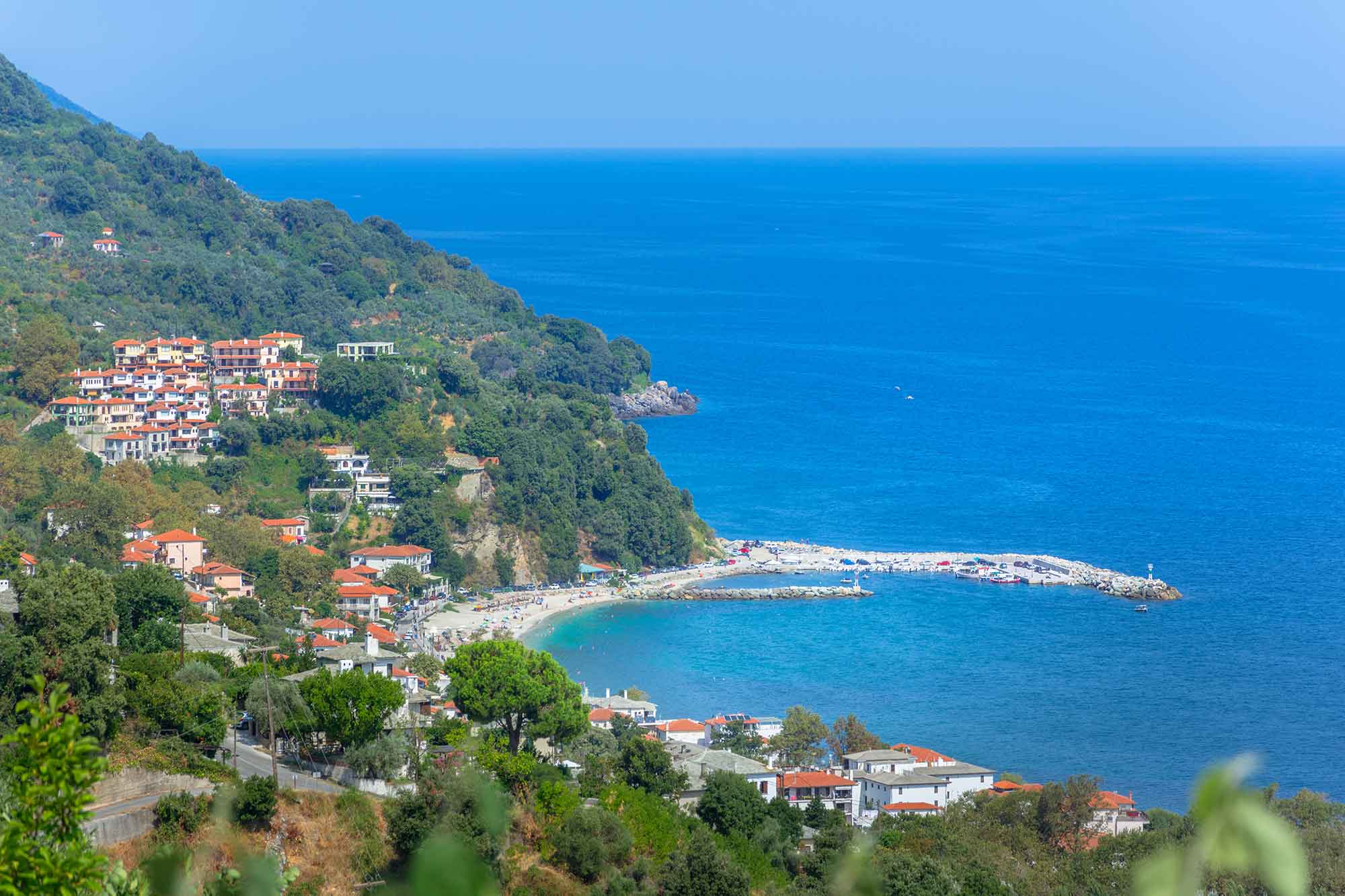
Tourism
Along the coast, tourism is an important source of income during the summer months. Numerous vacation homes, apartments and restaurants line the coastline, but large hotels or resorts are not to be found. Therefore, the Pelion region has been spared from mass tourism.
The vacationers, who find their way individually to their vacation destinations via winding roads in mountainous terrain, enjoy the peace and quiet, the unspoiled beaches, the crystal clear waters of the Aegean Sea and the hospitality of the locals.
But not only tourists appreciate the peninsula. Due to its lush vegetation and mild climate, the region is also popular among the Greek population and foreigners as a permanent second home.
In Milies is the station of the historic Pilio narrow-gauge railroad, which today offers tourist trips to the mountains. In winter, the ski resort at Chánia (Hania) is easily accessible from Vólos for day tourists.



